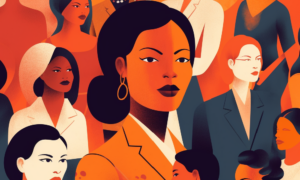How to educate leadership in volatile times
- 6 Min Read
How can we develop agile business leaders during times of great uncertainty? Sona Sherratt, Professor of Practice – Leadership, Ashridge Executive Education, Hult International Business School, investigates.
- Author: Sona Sherratt
- Date published: Aug 27, 2019
- Categories

In today’s volatile and uncertain world, where planning and forecasting is no longer something that can be relied on, learning agility has been has been identified as THE key requirement for successful leaders. Indeed, a curious mindset is increasingly hailed as more important than experience for leader’s advancement to senior roles.
Additionally, shared leadership is becoming increasingly common place in organisations where accountability and influence is distributed across team members. Leaders of tomorrow will work as a community, networked with others both inside and outside the organisation, and will need to adapt their approach as they go. Leaders will need to connect new ideas, knowledge and experiences from a wide set of experiences to be effective. Given that traditional models of training up high-potential staff to ‘command’ others are ill-suited to an environment where the factors influencing our decisions are constantly shifting, we must explore other ways to support leaders to succeed.
One way to support leaders in our progressively VUCA world is to help them develop adaptable behaviours so that they can use past experiences to reflect, make meaning and trial new behaviours. Leading through ambiguity requires learning agility, necessitating swift and equal finesse in both task completion and in relationship management. A curiosity and desire to learn is increasingly hailed as more important than experience for leaders’ advancement to senior roles.
So what is learning agility and what are the key components of this relatively new concept? Learning agility is frequently defined as the willingness and ability to learn from experience, and subsequently apply that learning to perform successfully under new or first-time conditions. It is widely deemed to have four components:
- Results agility – achieves results under difficult conditions; has authority and capability to stimulate others to perform;
- Mental agility – reflects about challenging dilemmas in order to uncover solutions; comfortable with complexity and ambiguity;
- People agility – has a high degree of self-awareness and self-management; able to flex to accommodate a diversity of behaviours and styles; resilient and constructive under pressure;
- Change agility – enjoys experimenting with innovative concepts; welcomes new responsibility and unfamiliar challenges.
One report concluded that while high performers are three times more likely to be identified as high potentials than employees with average performance, those identified as highly learning agile were 18 times more likely to be labelled as high potential (De Meuse, 2017). Furthermore, results from a ten-year longitudinal study of sales executives in North America concluded that learning agility was significantly related to promotion rates and average salary increase (Dai et al. 2013).
With strong evidence increasingly identifying learning agility as THE key requirement for successful leaders in a VUCA world , how do Human Resource professionals support leaders to develop this skill? This increasing need for agility demands constant learning and application of that knowledge to new experiences. Within the workplace, access to multiple roles and ability to translate situational and environmental components of leadership via exposure to those various roles is vital for development of learning agility. Breadth of experiences, with prospects to challenge and extend oneself, seems to be essential to the development of learning agility, particularly where prospects for transfer of lessons learned along the way are available.
Considerable research has been dedicated to the importance of goal orientation and growth mindset and its’ correlation to learning. Growth mindset describes individuals who are interested in continual learning, believing that one’s ability is not fixed. Evidence demonstrates that when learning and hard work are valued over appearance of being seen as smart, individuals gain higher levels of achievement over time; this is particularly pronounced within challenging situations and difficult transitions. In order for an organisation to create a learning culture, it must also nurture a growth mindset.
When supporting leaders through leadership programs, Learning and Development staff must not only procure courses which offer opportunities for leaders to be continually challenged but which also which nurture safe spaces to take risks, trial new behaviour and learn from failure. Learning interventions which can support learning agility include four vital strands:
- Learning through failure: including opportunities to learn in situations with high emotional impact, especially in being allowed to make mistakes and manage any resulting adverse outcomes.
- Feedback: Feedback must be specific, balanced and non-threatening feedback to either change or confirm behaviour; this not only allows leaders to correct any mistakes made but also encourages scrutiny of underlying thoughts and assumptions which can stop similar errors occurring.
- Psychological safety: the inherent risk of learning and ‘getting it wrong’, particularly within a group of peers must be mitigated through a culture of psychological safety for learners. People tend to inhibit their own learning when they are faced with situations that are potentially threatening or embarrassing. Facilitators should encourage explicit dialogue about deeply held values and beliefs about leaders’ motivation for learning and co-create an environment which encourages trust and collaboration.
- Deliberate practice: for learning agility to become ingrained within our leaders we must encourage them to see the link between learning and plentiful practice. Inclusion of repeated opportunities to master a behaviour, should be included within the programme design.
To foster curiosity and agility in the VUCA world in which we live, leaders need to unlearn behaviours which worked for them in the past but are no longer constructive and trial new behaviours.
L&D professions must source experiential training opportunities which not only challenge leaders to learn through failure but also offer feedback and potential for double loop learning. Development programmes must create a trustful culture and provide opportunities for high emotional impact, impelling leaders to take risks which foster agile learning.
 Sona Sherratt is a faculty member at Ashridge where she designs, teaches and client directs on several executive education programmes with clients such as SAB Miller, Swarovski, Heineken, Erste Group Bank, Avis, Beazley Insurance Group and Continental. Sona has designed and delivered senior leadership and general management programmes for clients around the world. Her interests are predominantly in leadership, change management, influencing, motivation and long-term sustained learning. She facilitates learning support groups, action learning sets and provides executive coaching to help improve individual performance.
Sona Sherratt is a faculty member at Ashridge where she designs, teaches and client directs on several executive education programmes with clients such as SAB Miller, Swarovski, Heineken, Erste Group Bank, Avis, Beazley Insurance Group and Continental. Sona has designed and delivered senior leadership and general management programmes for clients around the world. Her interests are predominantly in leadership, change management, influencing, motivation and long-term sustained learning. She facilitates learning support groups, action learning sets and provides executive coaching to help improve individual performance.









